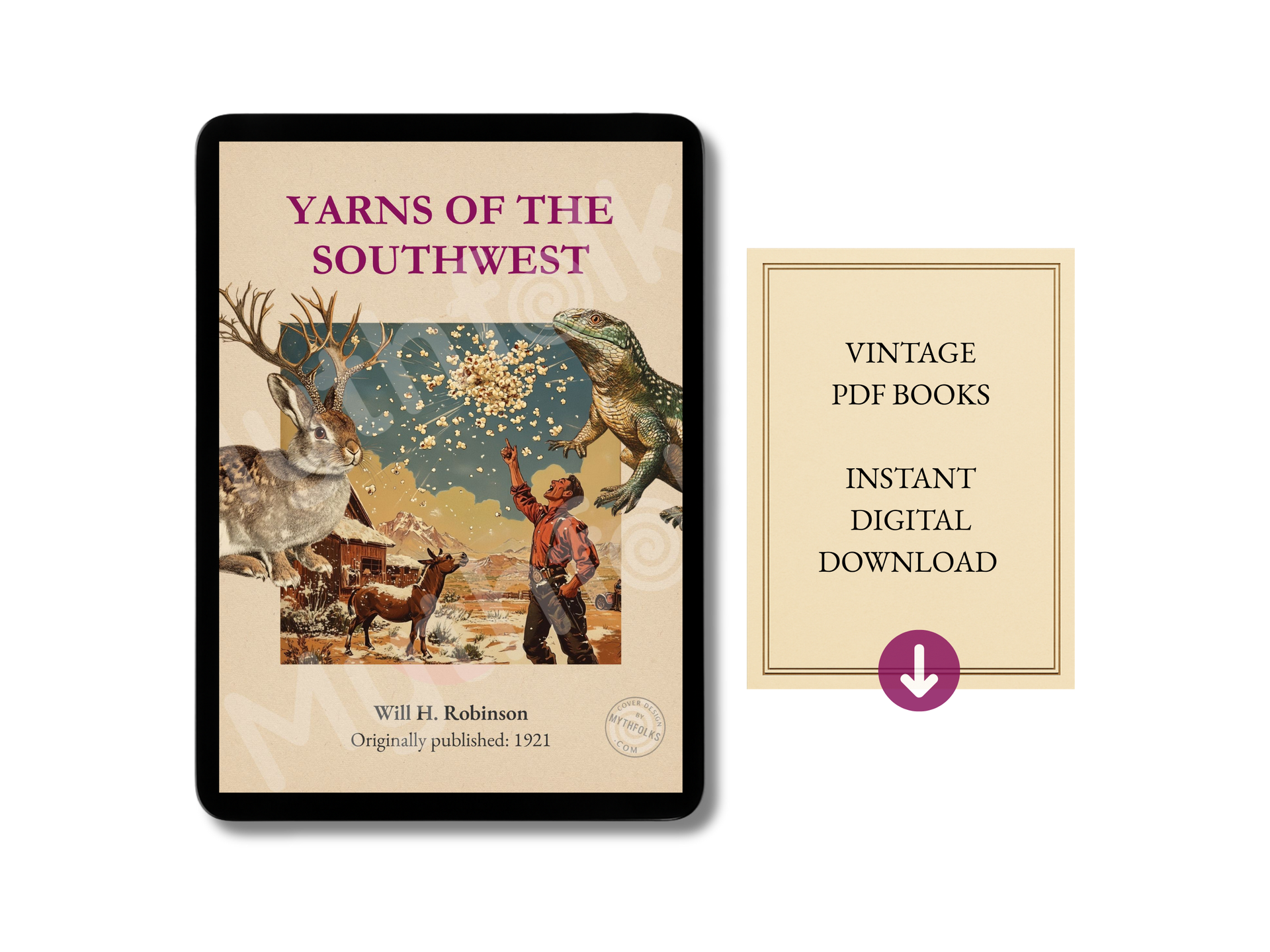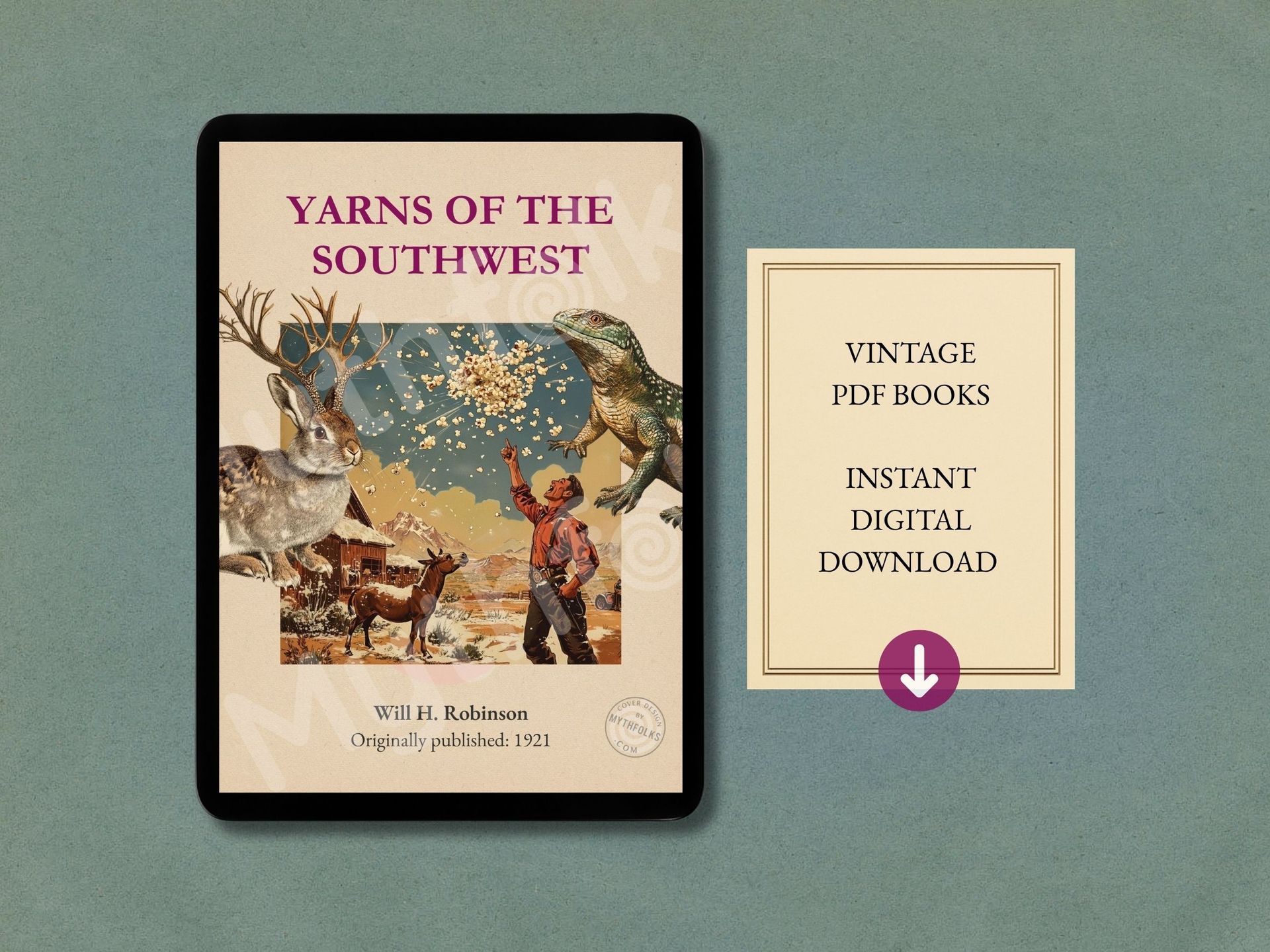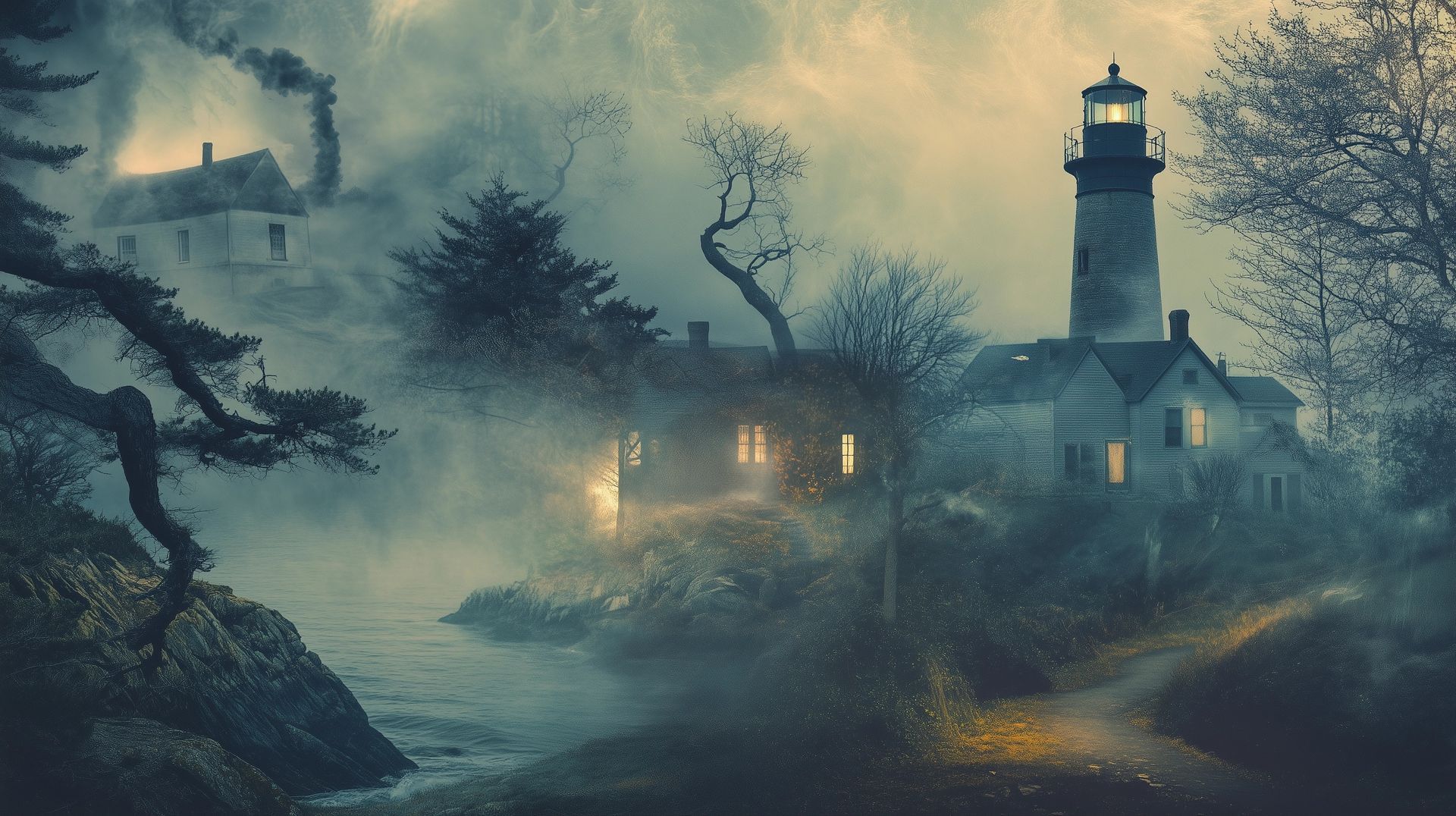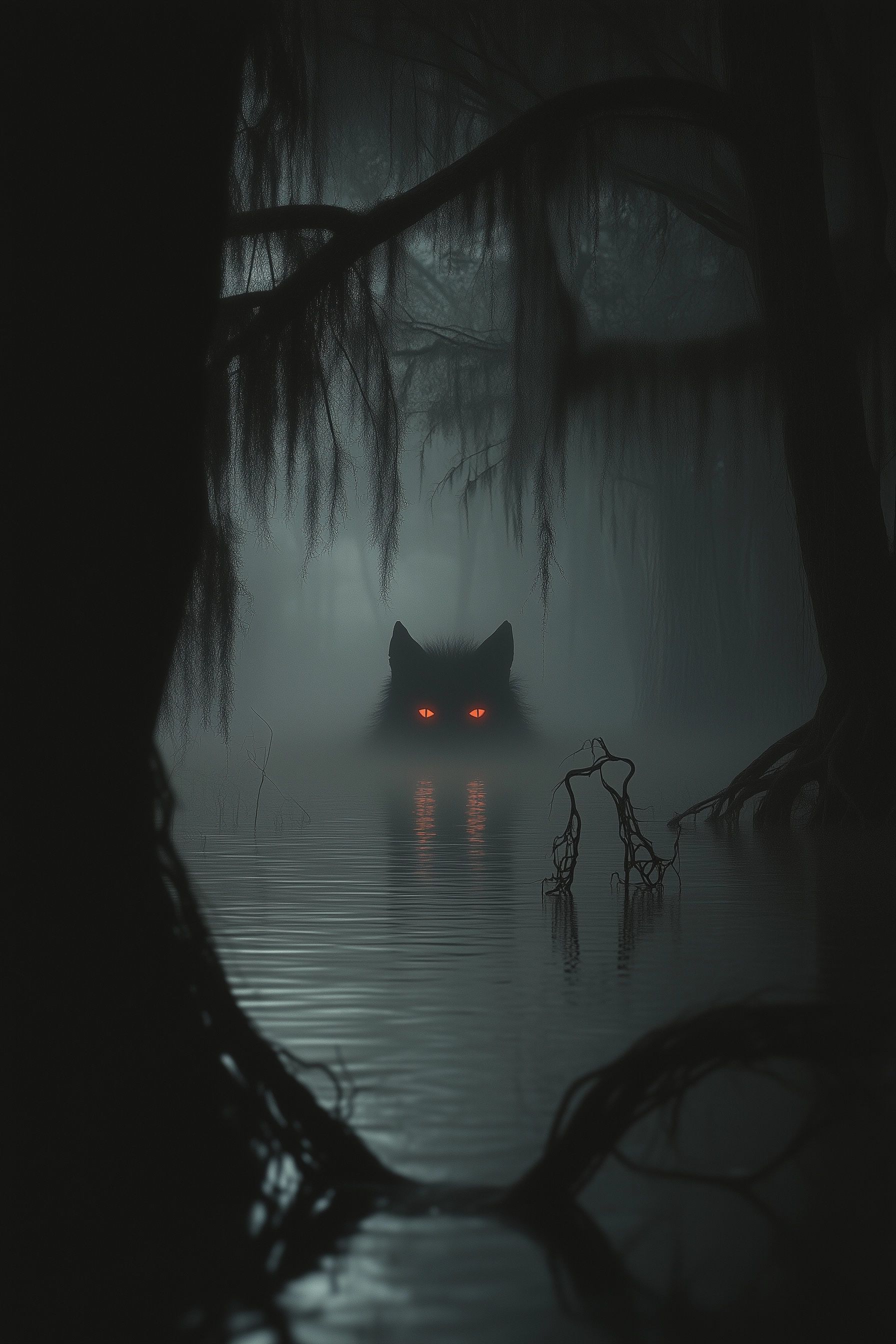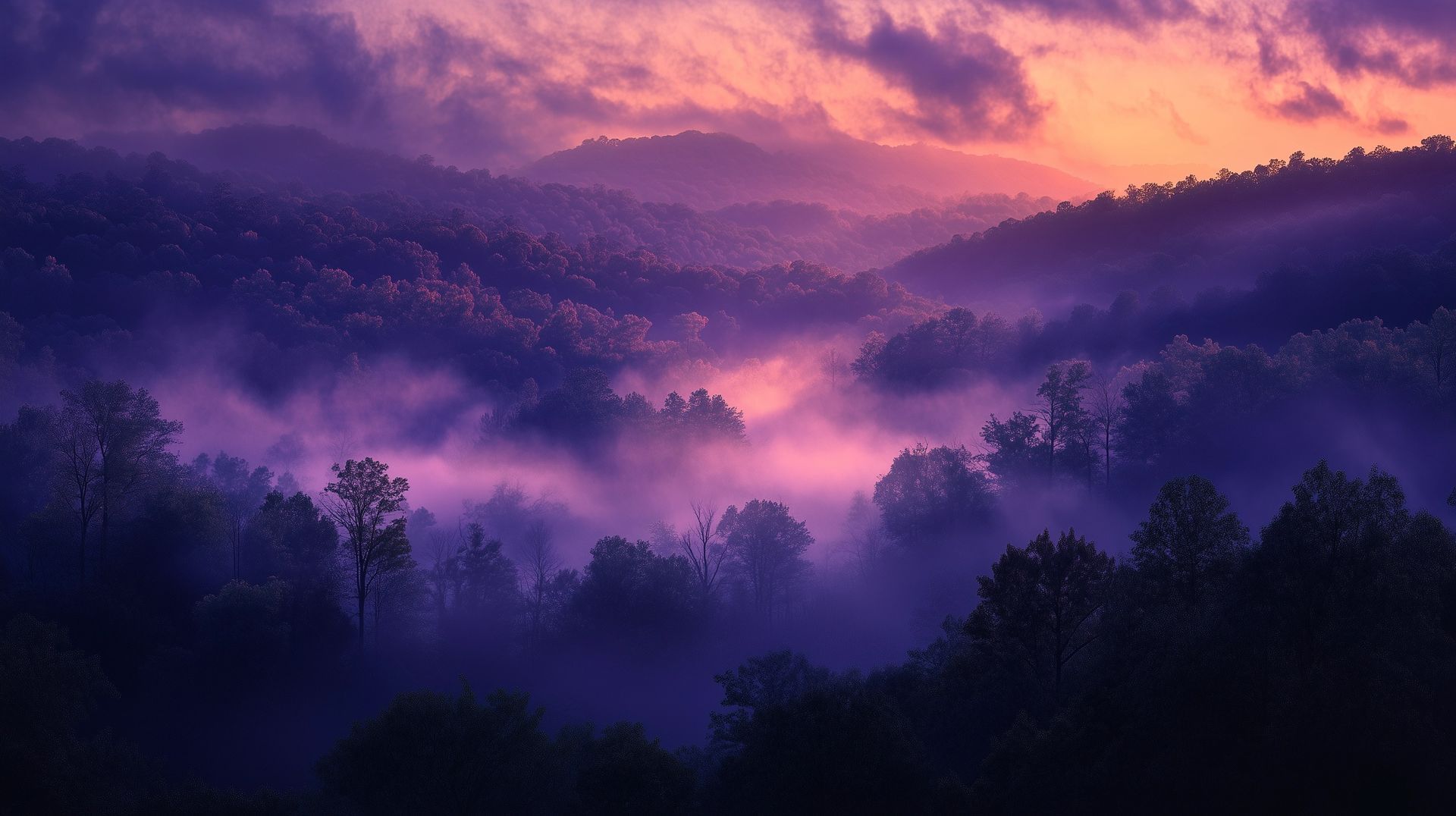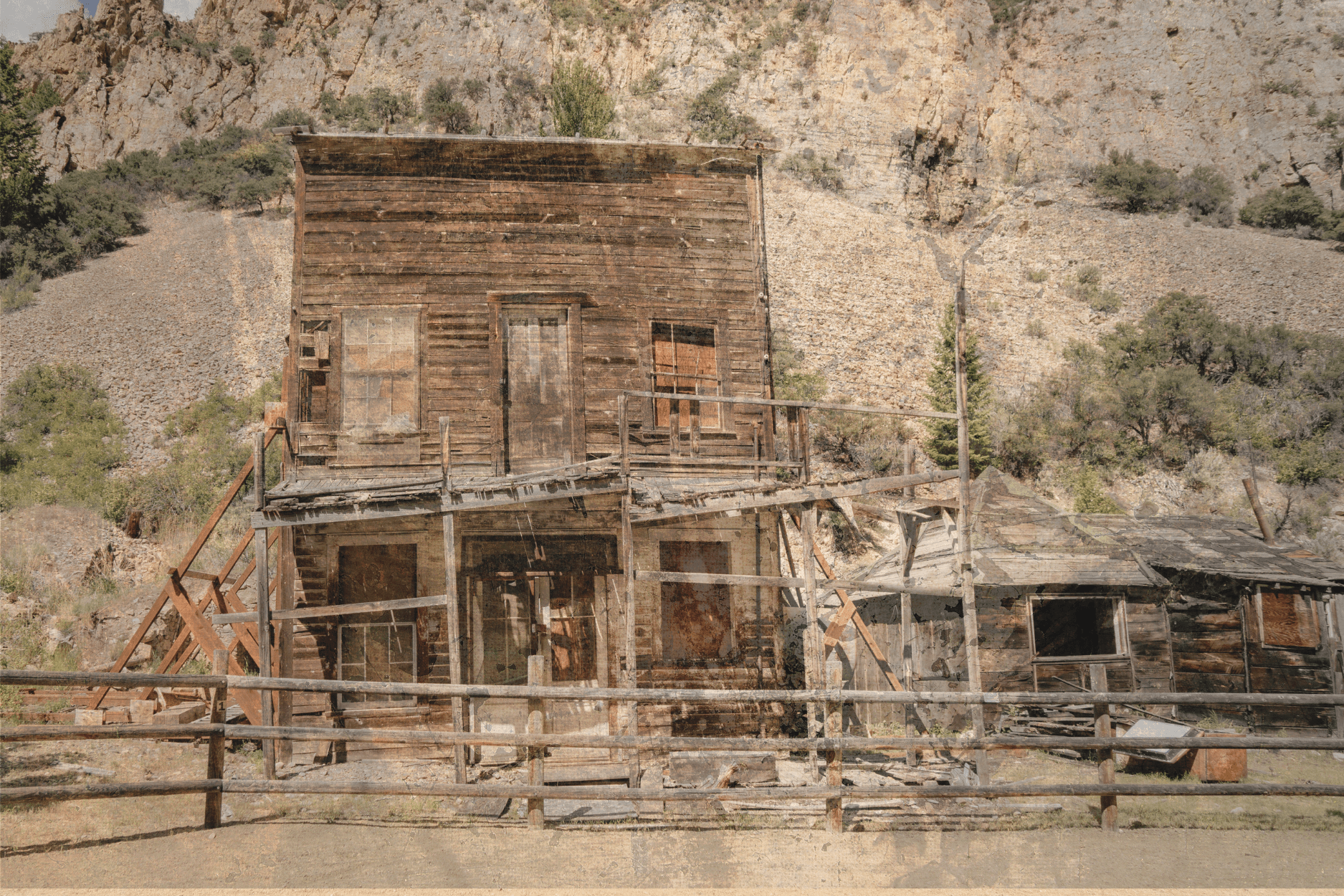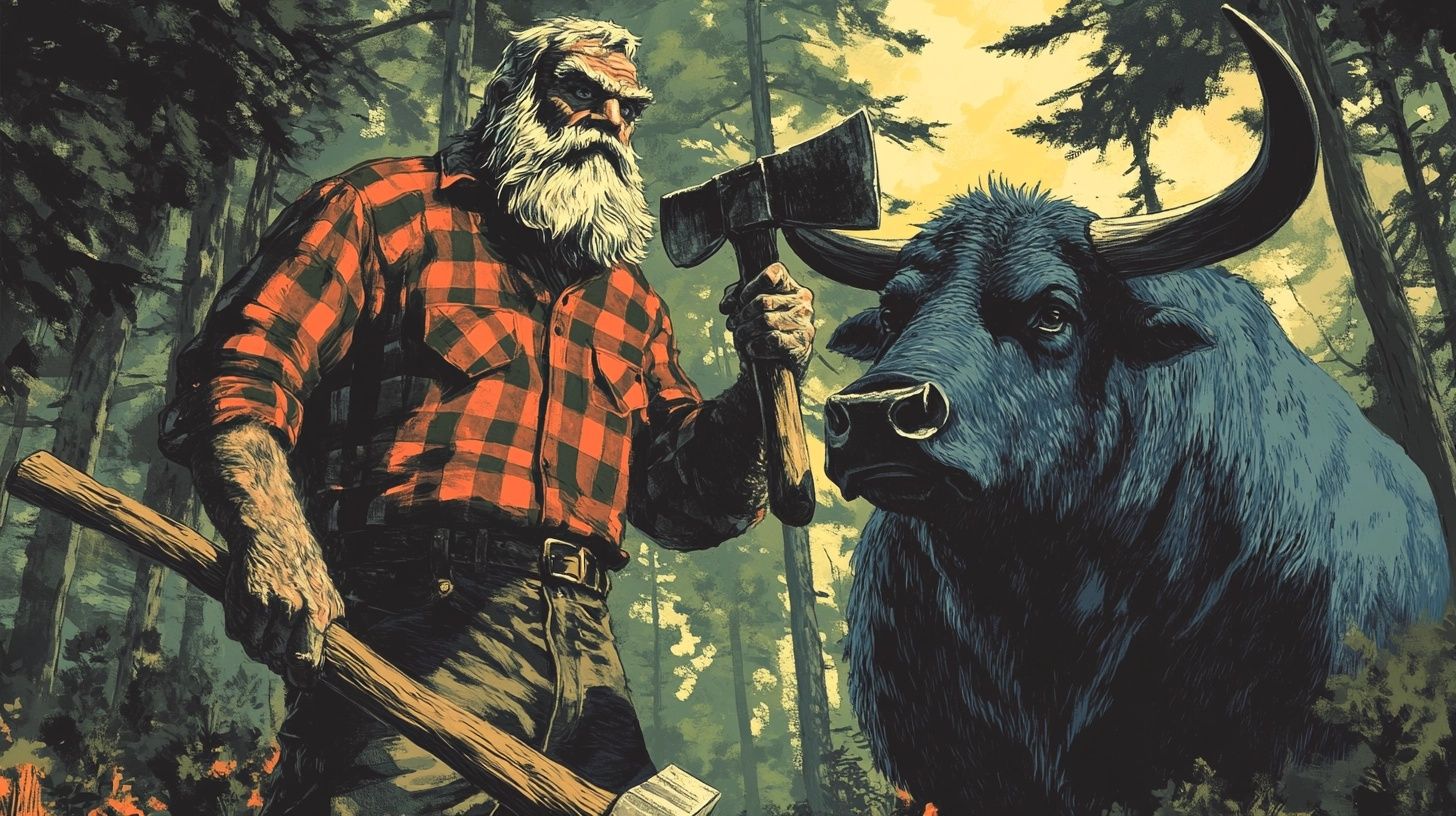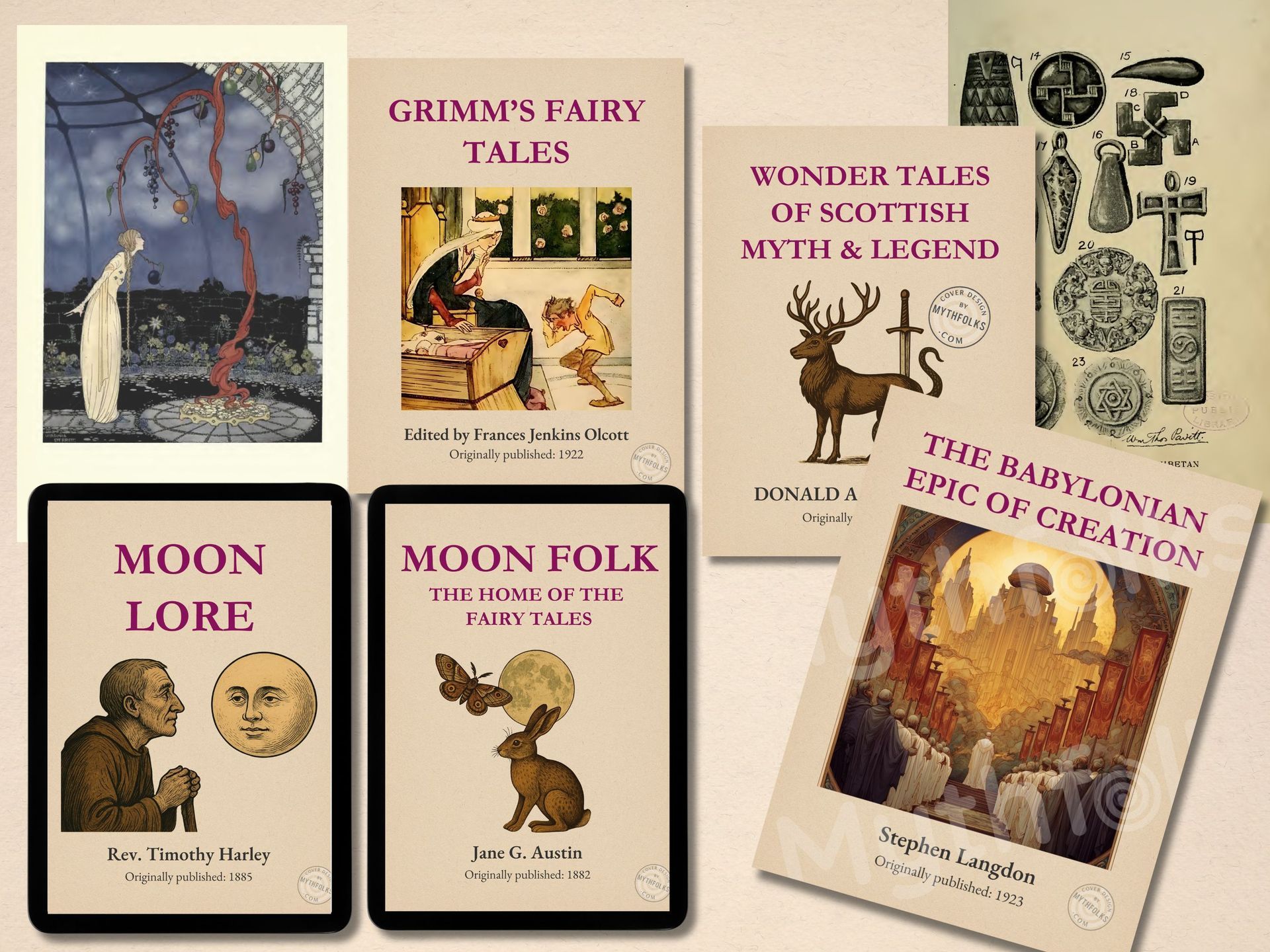Arizona folklore: mythical creatures, cryptids and ghost stories from the Grand Canyon State
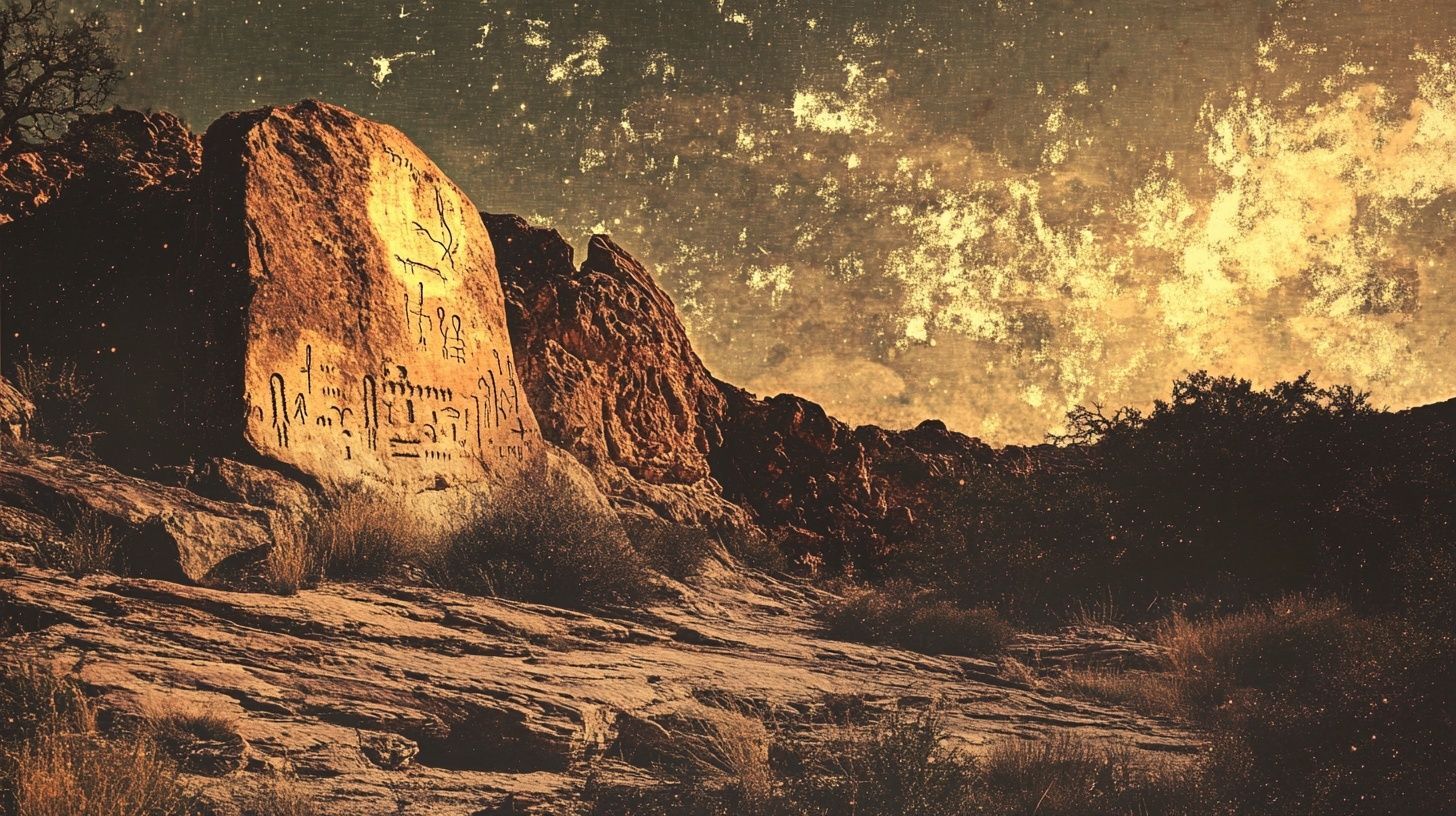
Arizona’s folklore is as layered and striking as its landscape. From the high plateaus of the north to the dry, starlit basins of the south, this smoldering, arid desert state is home to centuries of stories.
Many of those tales are heavily rooted in ancient Indigenous traditions, but others come from settler legends, Hispanic traditions and scrappy frontier survival stories.
Let’s take a look at this melting pot of
US cultural stories from the Grand Canyon State…
Published: 4th Jul 2025
Author: Sian H.
Mythical creatures of Arizona
Skinwalkers (Navajo – yee naaldlooshii)
A well-known figure in Navajo tradition, the Skinwalker is a witch said to transform into animals - usually coyotes, wolves or owls - by wearing their skins which is said to give them supernatural speed and stealth.
Though often associated with the broader Four Corners region, reports of Skinwalkers in northern Arizona remain common.
The stories aren’t treated lightly and among many Navajo, even mentioning the name is considered dangerous, as it could attract their attention.
Chindi (Navajo)
A Chindi is the ghostly residue of a person’s negative energy, left behind if proper death rituals aren’t followed.
Considered to be dangerous, Chindi are linked to illness, bad luck and certain locations like abandoned homes or battlegrounds.
Traditional Navajo practices avoid the possessions and homes of the dead to prevent these
spirits from lingering.
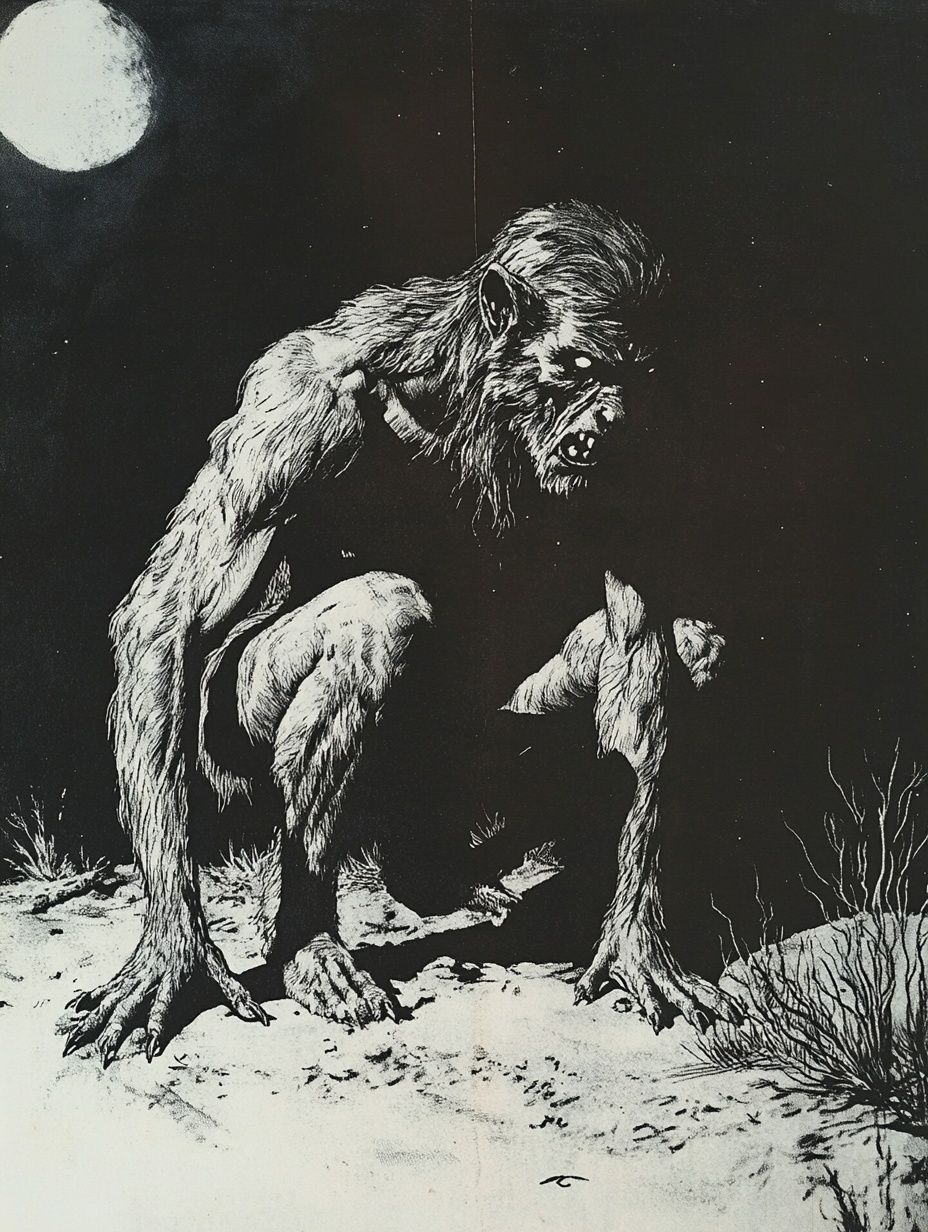
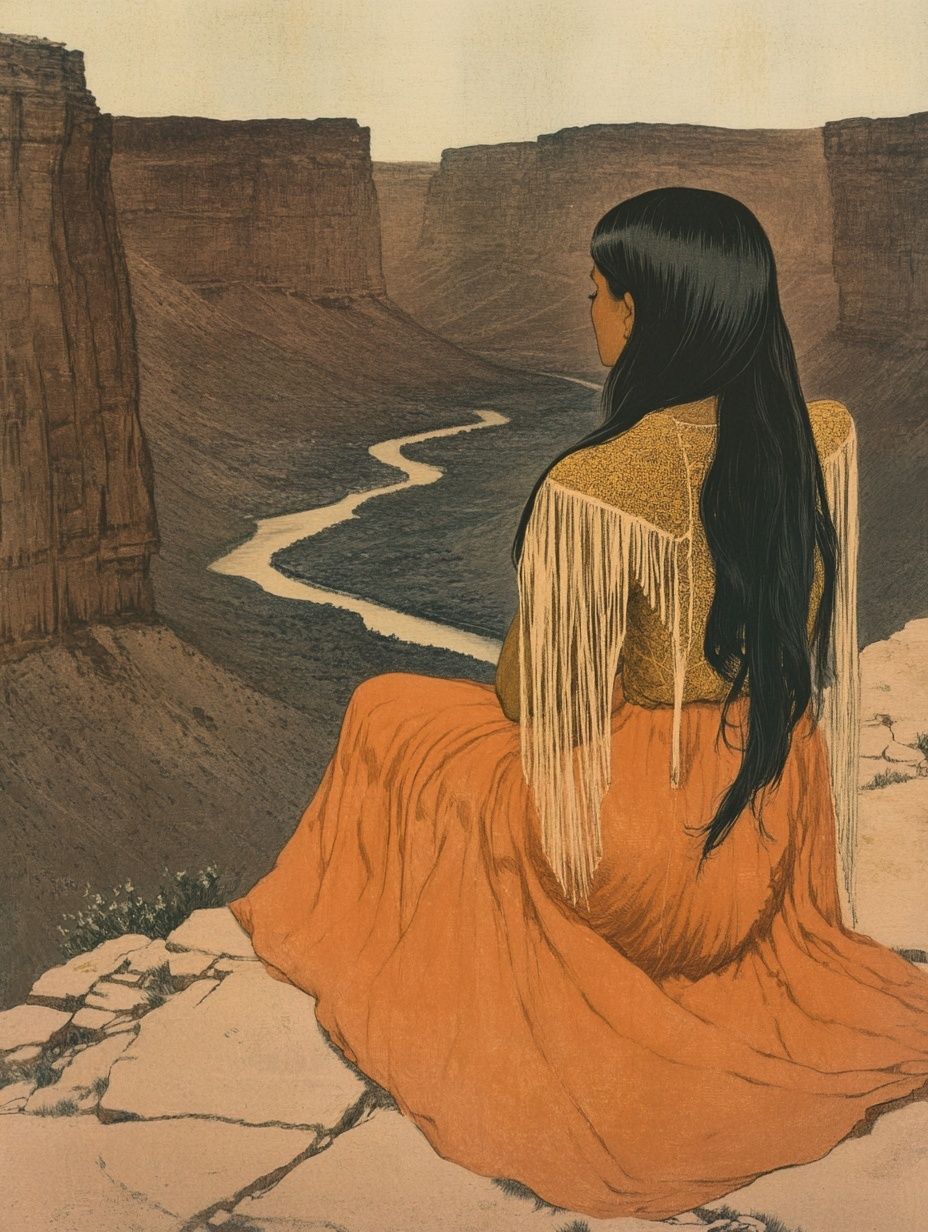
Spider Woman (Hopi - Kókyangwuti)
Long before there was a Spider Man, there was Spider Woman.
Central to Hopi creation stories, Spider Woman helped form the world and guide humanity.
Though not worshipped as a goddess, she is honored as a cultural ancestor and spiritual guide, often appearing in dreams or riddles.
Said to dwell near the San Francisco Peaks, she’s symbolically tied to weaving, creativity, fate and feminine power.
Thunderbird
Appearing in Hopi and Apache traditions across North America (including in Canadian folklore), the Thunderbird is a massive, storm-controlling spirit bird.
It’s said to summon thunder with its wings and shoot lightning from its eyes. In settler lore, reports of giant birds - like the 1890 Tombstone story - blurred the Thunderbird with cryptid-style sightings.
But in Native traditions, the Thunderbird is sacred and modern
cryptid tales are a separate, more recent layer.
Montezuma and the Hero Twins (Hopi and Zuni)
In Hopi and Zuni stories, Montezuma appears not as the Aztec emperor but as a culture hero or trickster, often alongside twin figures.
These Hero Twins echo a wider Mesoamerican motif - seen in the Mayan Hunahpú and Xbalanqué - and are credited with shaping landforms and teaching survival.
In Arizona, these stories are often tied to sacred sites like the Painted Desert and Black Mesa.
La Llorona (Southwestern Hispanic tradition)
Though very much rooted in Latin American folklore, La Llorona is often said to roam Arizona’s rivers and canals (and she also appears prominently in Texas folklore) .
The weeping woman who apparently drowned her children is linked in this state to the Gila and Salt Rivers, appearing after dusk or near flash floods.
Her legend migrated north with Hispanic settlers and is very much alive in many of the desert communities.
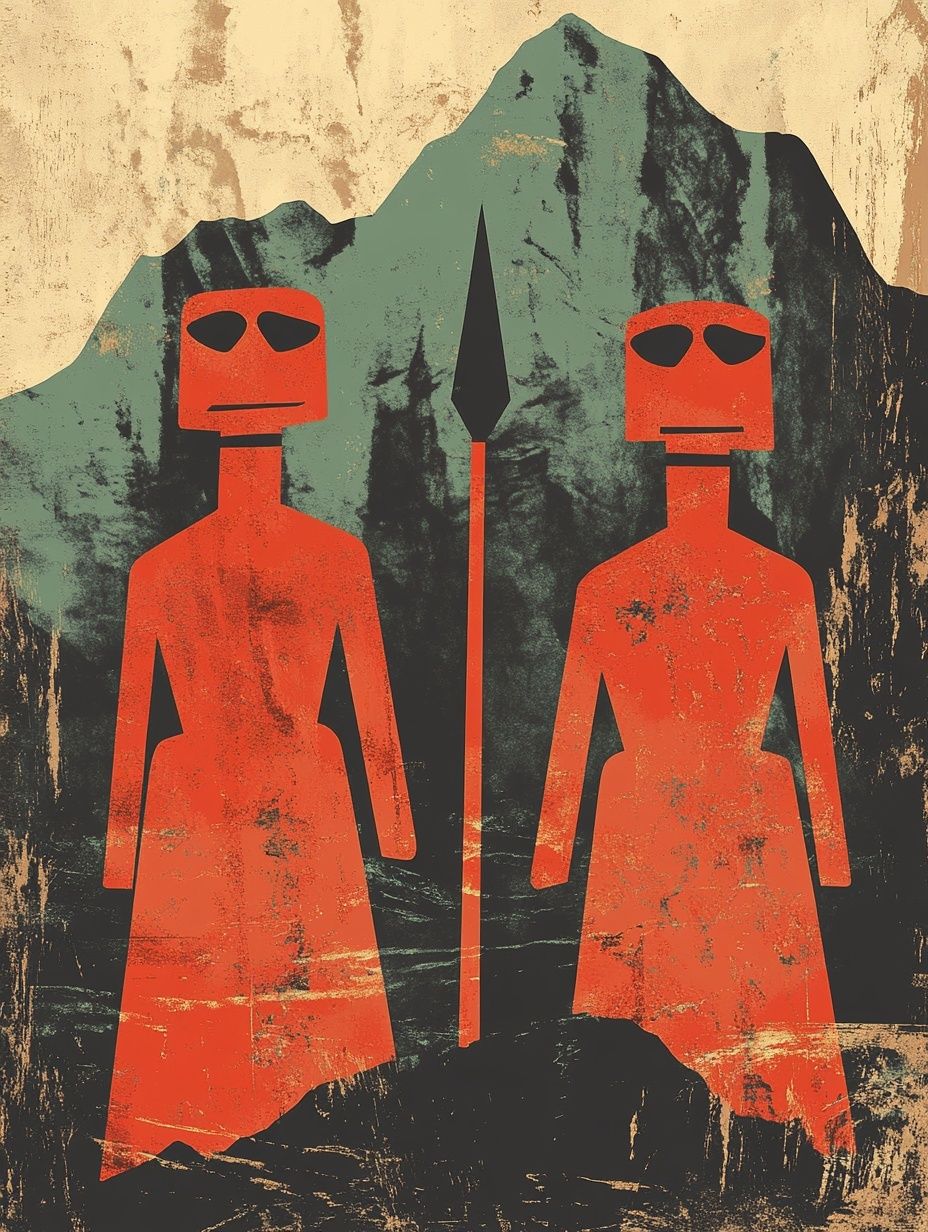
Amaypathenya
From Mohave and Yuman traditions, these small, shape-shifting beings are said to live near petroglyphs and rock formations in western Arizona.
Standing about two feet tall, they’re described as shape-shifters and makers of petroglyphs, capable of magic and deception. Their name roughly translates to “just like spirits,” and they’re rarely seen directly.
Arizona cryptids & legendary creatures
Arizona is very light on "real" cryptids, by which I mean those that fit the cryptid definition of maybe existing but not yet proven. But the state does have a number of real creatures that have found their way into local legend.
Mogollon Monster
Arizona’s version of Bigfoot - and possibly the only creature that really meets cryptid status - this towering, awful-smelling figure is said to haunt the pine forests along the Mogollon Rim. Described as around 7 feet tall, covered in reddish or black hair, and glowing-eyed, sightings go back to 1903, when a wild man was reported near the Grand Canyon. Modern reports cluster around Payson, Heber, and the Rim Lakes.
There's also a Hopi creature called
So’yoko, which is described as a cannibal giant and is said to inhabit the northeastern part of the state. Very little info available on this one and not quite the same, but another Bigfoot-like/cryptid-like creature from these parts.
The Red Ghost
In the 1870s, during the U.S. Army’s short-lived experiment using camels in the Southwest, one of the animals reportedly escaped.
Soon after, settlers around the Verde Valley began reporting a massive, reddish beast roaming the desert, trampling tents, scattering livestock and leaving enormous hoofprints.
Fear and confusion grew, and sightings of the so-called “Red Ghost” became part of frontier lore.
Years later, the creature was finally shot. It turned out to be a feral camel, its saddle still intact - and tangled in the straps were human bones. Though the story is now a bit embellished with ghostly overtones, it still stands as a bizarre creature feature out of Arizona!
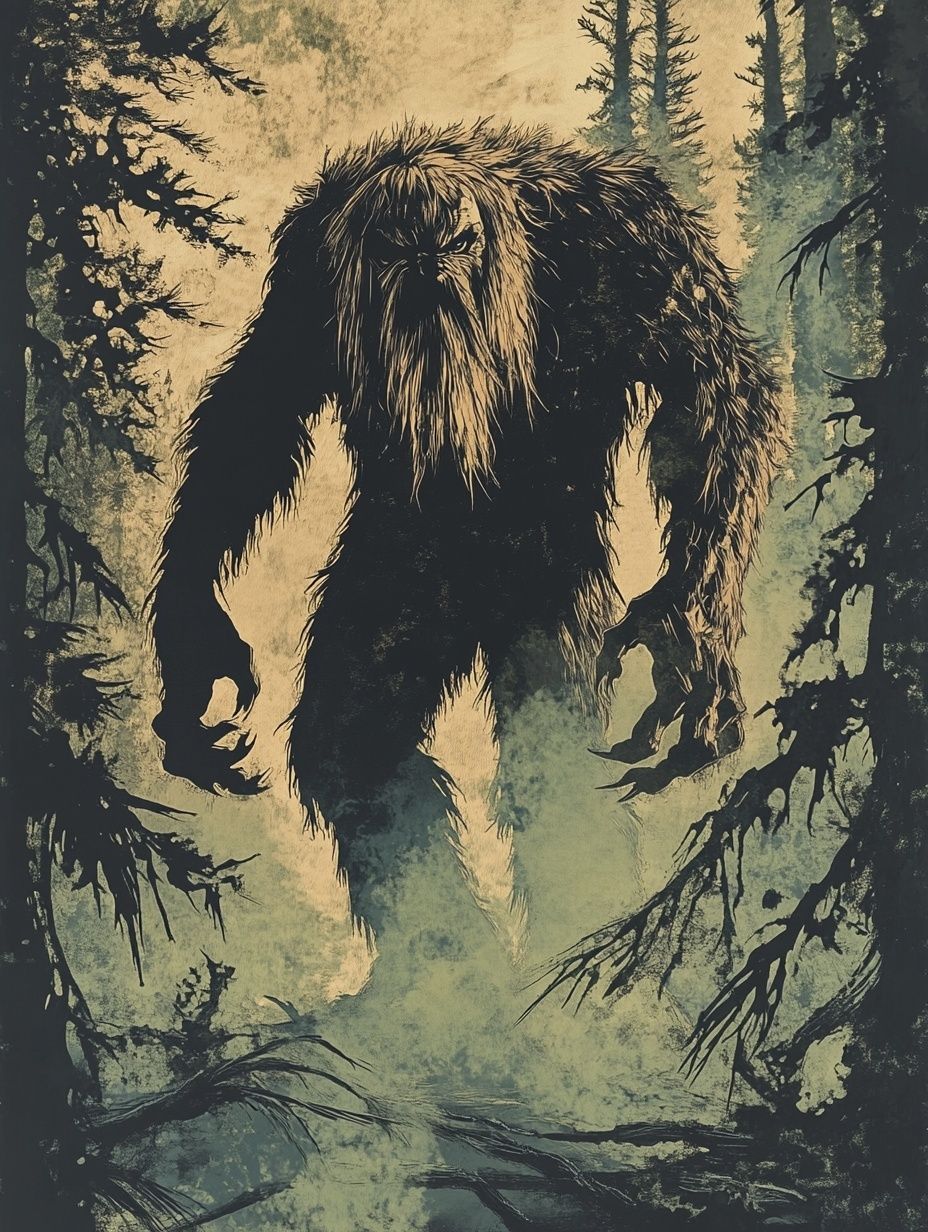
Enjoying this article? Check out this rare, vintage ebook featuring tall tales & yarns of the old Southwest USA!
(Clicking the link will open the Mythfolks Etsy shop in a new tab.)
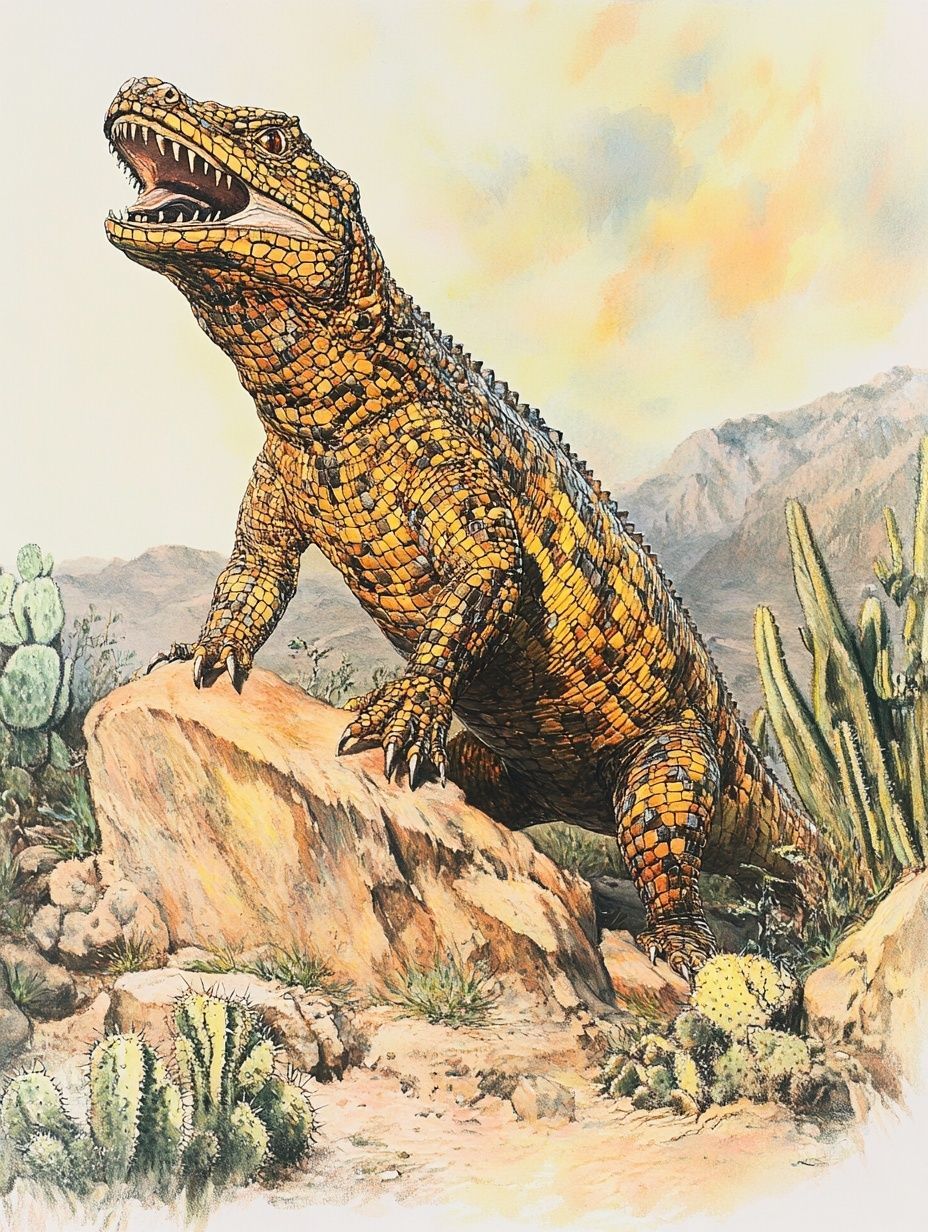
Gila Monsters and the creatures of the desert
Not cryptids but legendary, Gila monsters are real, venomous lizards native to the Southwest and have often been exaggerated into something much larger and more dangerous in frontier-era stories.
The Gilaopolis is a critter based on the Gila, from the original "Fearsome Creatures of the Lumberwoods, With a Few Desert and Mountain Beasts" by William T. Cox, a fabulous collection of made-up creatures gathered from across the US (and many featuring in tall tales like those of Paul Bunyan.)
Some Apache tales describe giant lizards or horned reptiles guarding water sources in the desert and early settlers, unfamiliar with the Gila’s slow-moving but poisonous bite, sometimes described it as a desert dragon capable of killing with a stare or breathing venom.
Arizona ghost stories and haunted places
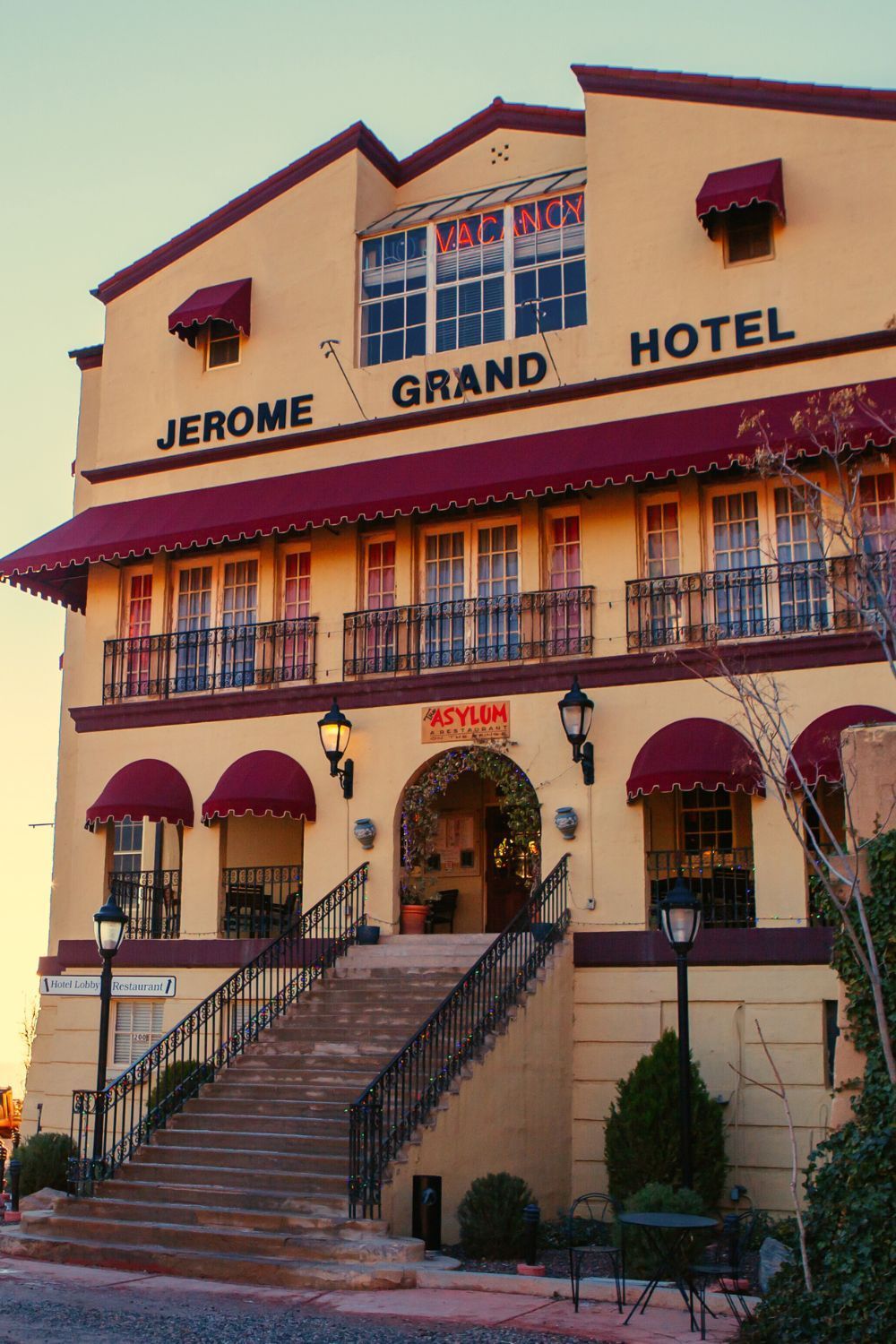
Jerome
Once a copper mining town with a reputation for violence and vice, Jerome is now widely known as one of the most haunted places in Arizona.
During its boom in the early 20th century, it was nicknamed “the wickedest town in the West.”
Today, several of its buildings are said to be inhabited by the spirits of former residents.
The Jerome Grand Hotel, formerly a hospital, is considered the epicenter of paranormal activity. Guests report disembodied voices, footsteps and the sound of hospital equipment still in use.
Other haunted locations include the Mile High Inn and the Spirit Room saloon.
Hotel Monte Vista, Flagstaff
This historic hotel, operating since 1927, has hosted numerous celebrities over the decades.
It’s also become known for its ghost stories. Staff and guests have reported multiple entities, including a phantom bellboy who knocks on doors and vanishes, a woman who wanders the halls whispering and a long-term resident whose presence is said to linger in Room 305.
The hauntings are consistent enough that some rooms are now marketed with their ghost stories in mind.
The Bird Cage Theatre, Tombstone
Tombstone is closely tied to Wild West folklore, and the Bird Cage Theatre is one of its most enduring landmarks.
Originally a saloon, gambling hall, and brothel, it operated around the clock for eight years straight during the 1880s. Its bullet holes and preserved rooms reflect the violent, lawless environment.
Today, it’s a museum and one of Arizona’s most frequently investigated haunted sites. Visitors and staff have reported ghostly music, apparitions dressed in 19th-century clothing and unexplained voices.
The identities of the spirits remain uncertain, though some are believed to be former performers or patrons.
Slaughterhouse Canyon (Luana’s Canyon), near Kingman
This legend dates to the mid-1800s and tells of a family living in a remote canyon during a time of hardship.
When the father failed to return from a supply trip, the mother, overcome by hunger and grief, killed her children and threw their bodies into the nearby river. She’s said to still wander the canyon, crying out in sorrow.
The story closely mirrors that of La Llorona - mentioned earlier - a weeping woman tied to water and loss. While there’s no record confirming the event, like many frontier ghost tales, it's one that mixes tragedy with moral warning.

Yuma Territorial Prison
Now a historic state park, the Yuma Territorial Prison operated from 1876 to 1909 and housed some of the region’s most dangerous criminals. Conditions were harsh and many inmates died from disease, violence or suicide.
Today, the site is open to visitors, some of whom report cold spots, disembodied voices and apparitions. The dark cell, used for solitary confinement, is especially noted for producing intense unease and physical sensations like dizziness or nausea.
Indigenous beliefs and sacred places
San Francisco Peaks (Dookʼoʼoosłííd)
Located near Flagstaff, the San Francisco Peaks are sacred to multiple tribes, including the Hopi, Navajo, Havasupai and Zuni.
The Navajo regard the peaks as one of their four sacred mountains, representing the western boundary of their traditional homeland and associate the area with spiritual beings and weather powers.
The Hopi believe the kachinas - ancestral spirit messengers - live in the peaks during the winter months, before returning to Hopi mesas in spring. Because of this, the mountains play a central role in ceremonial cycles.
Modern development on the peaks, including the use of artificial snow on ski slopes, has caused ongoing legal and cultural disputes between tribes and local governments.
Canyon de Chelly
This canyon system in northeastern Arizona has been inhabited for nearly 5,000 years, most recently by the Navajo, who still live and farm within its walls. The area contains ancient cliff dwellings, petroglyphs and sites of historical trauma, including the 1864 Long Walk, when the U.S. military forcibly removed the Navajo from their land.
Many Navajo stories describe the canyon as spiritually charged. Some say spirits linger in the high cliffs and that certain areas should be avoided at night. Guides often tell of unexplained sounds, lights or sensations reported by visitors.
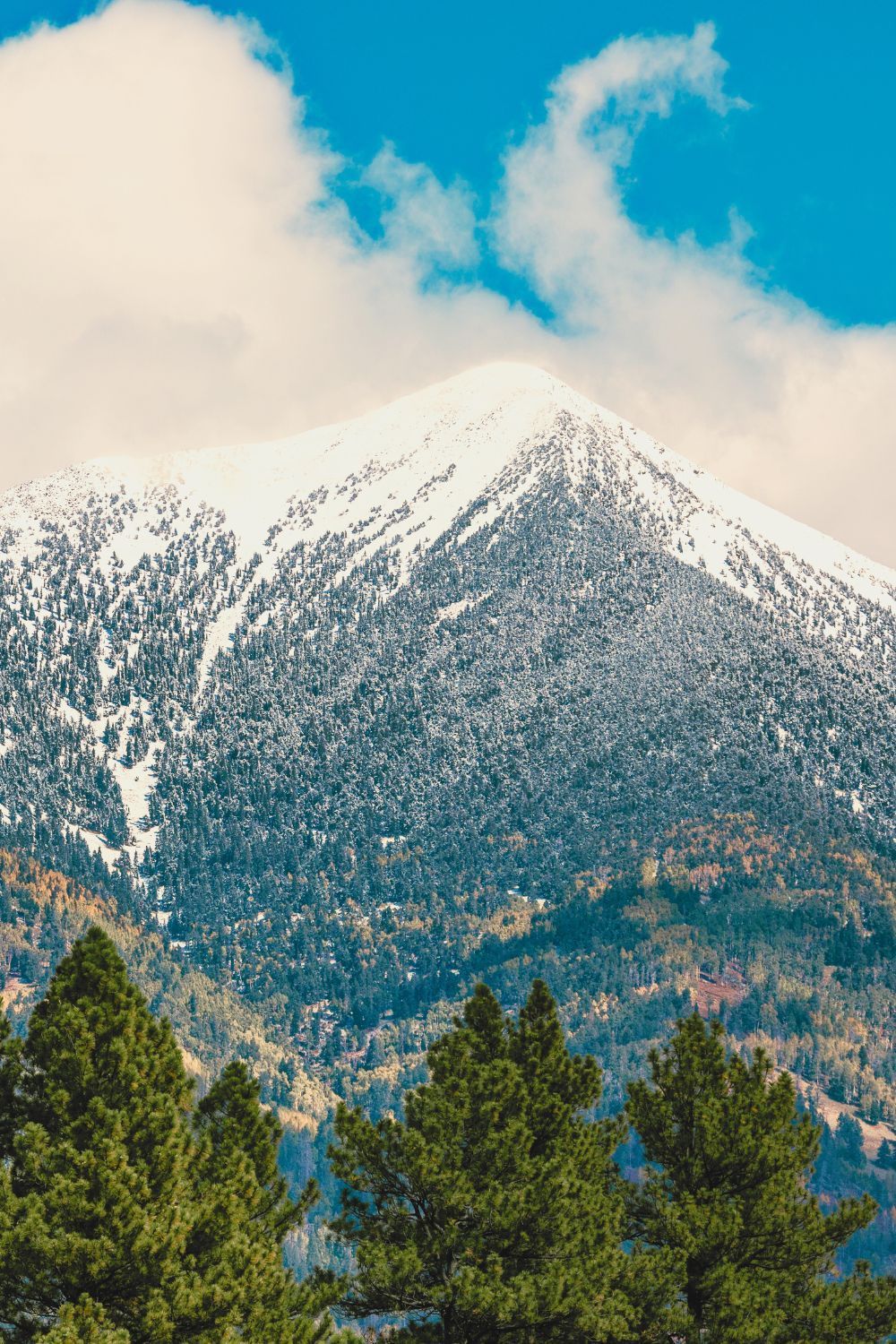
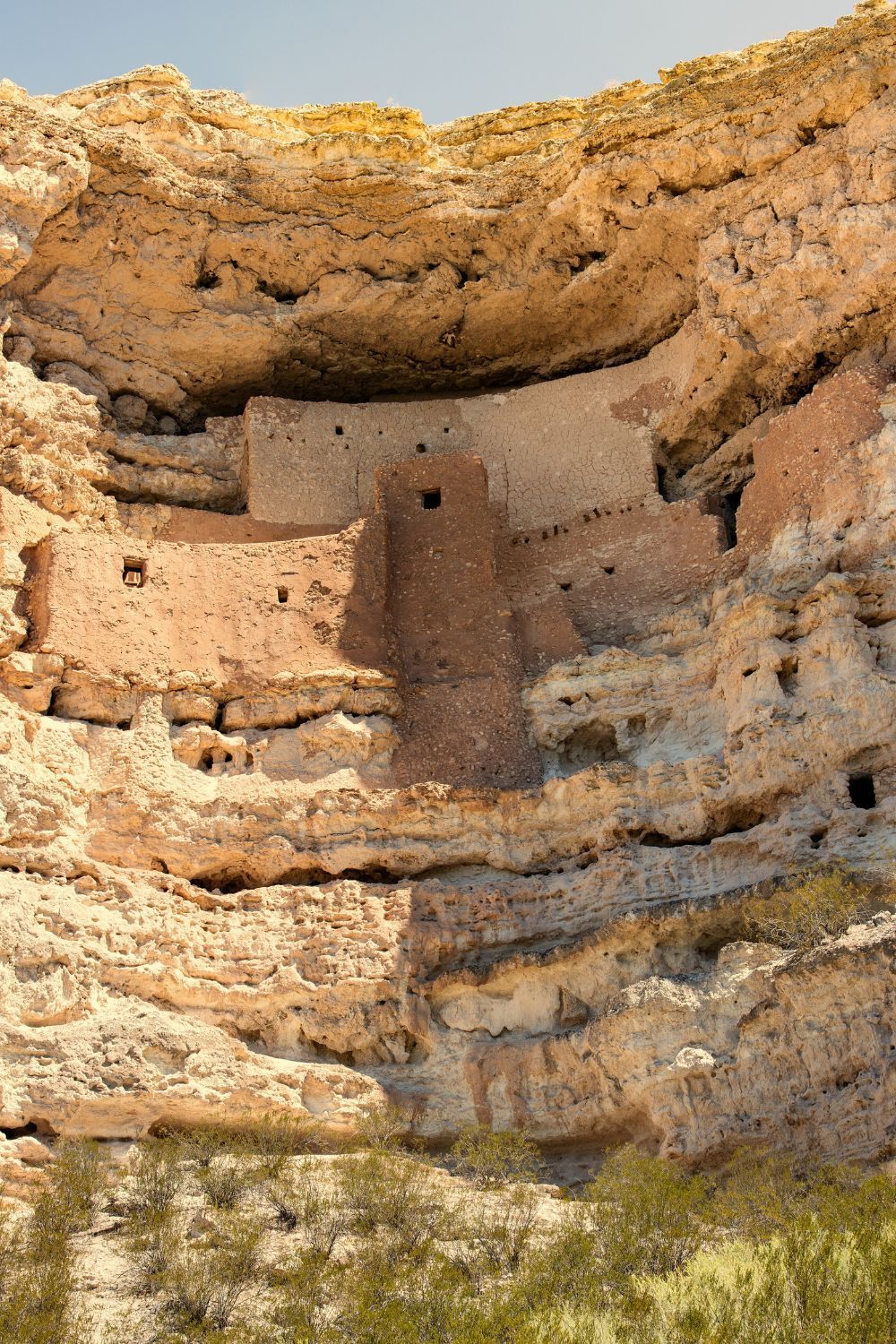
Superstition Mountains
East of Phoenix, the Superstition Mountains are known for both Indigenous traditions and settler legends. Apache oral history describes the area as containing portals to the underworld and as the home of thunder spirits. Specific details vary between sources, but the mountain is often treated as a dangerous place where one shouldn't hang about without purpose.
The mountains are also associated with the legend of the Lost Dutchman’s Gold Mine (see below), but long before this mine myth, the region was treated as spiritually significant by the Apache and other tribes.
Montezuma Well and Montezuma Castle
Like the mythical character referenced earlier, these sites also have no direct connection to the Aztec ruler Montezuma. The well and castle are located in central Arizona and were inhabited by the Sinagua people, a pre-Columbian culture related to the Hopi. The well is a natural limestone sinkhole, filled by underground springs and supports a unique ecosystem.
Local tribes, including the Yavapai and Hopi, consider the well a place of emergence - where life came into being or where spirits dwell. It’s used in some contemporary ceremonies and access to certain areas is restricted out of respect for ongoing spiritual practice.
Folktales and historical legends
The Lost Dutchman’s Gold Mine
One of the most famous legends in the American West, the Lost Dutchman’s Gold Mine is supposedly hidden somewhere in the Superstition Mountains.
The story centers on Jacob Waltz, a German immigrant (referred to as “the Dutchman”) who allegedly discovered a massive gold vein in the 1800s and took its location to the grave.
Since then, dozens of would-be treasure hunters have searched the area, books and documentaries have been made and rescue missions enacted, but no gold has ever been officially recovered.
The legend likely combines real 19th-century mining claims with older Spanish and Apache stories about hidden wealth in the region.
El Diablo of Bisbee
In the late 19th century, Bisbee was a booming mining town with a violent streak. One recurring story from the area tells of a shadowy outlaw known as El Diablo, described as a tall, silent rider dressed in black who would appear before disasters - mine collapses, fires or shootings - and vanish afterward.
Some versions of the tale describe him as a cursed gunslinger or the Devil in disguise. Though no single historical figure matches the story exactly, reports of a mysterious horseman or lawless spirit have been told in Bisbee for more than a century.
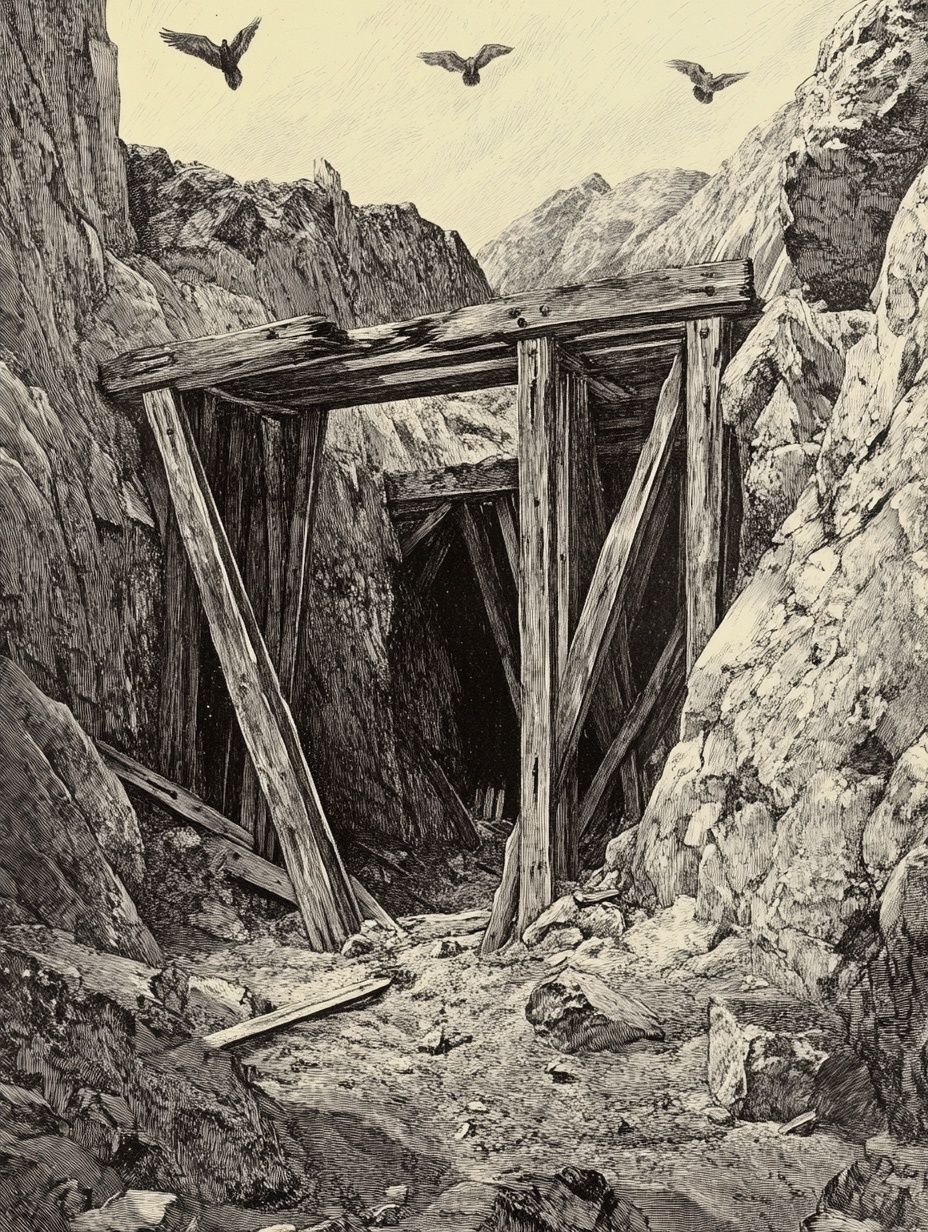
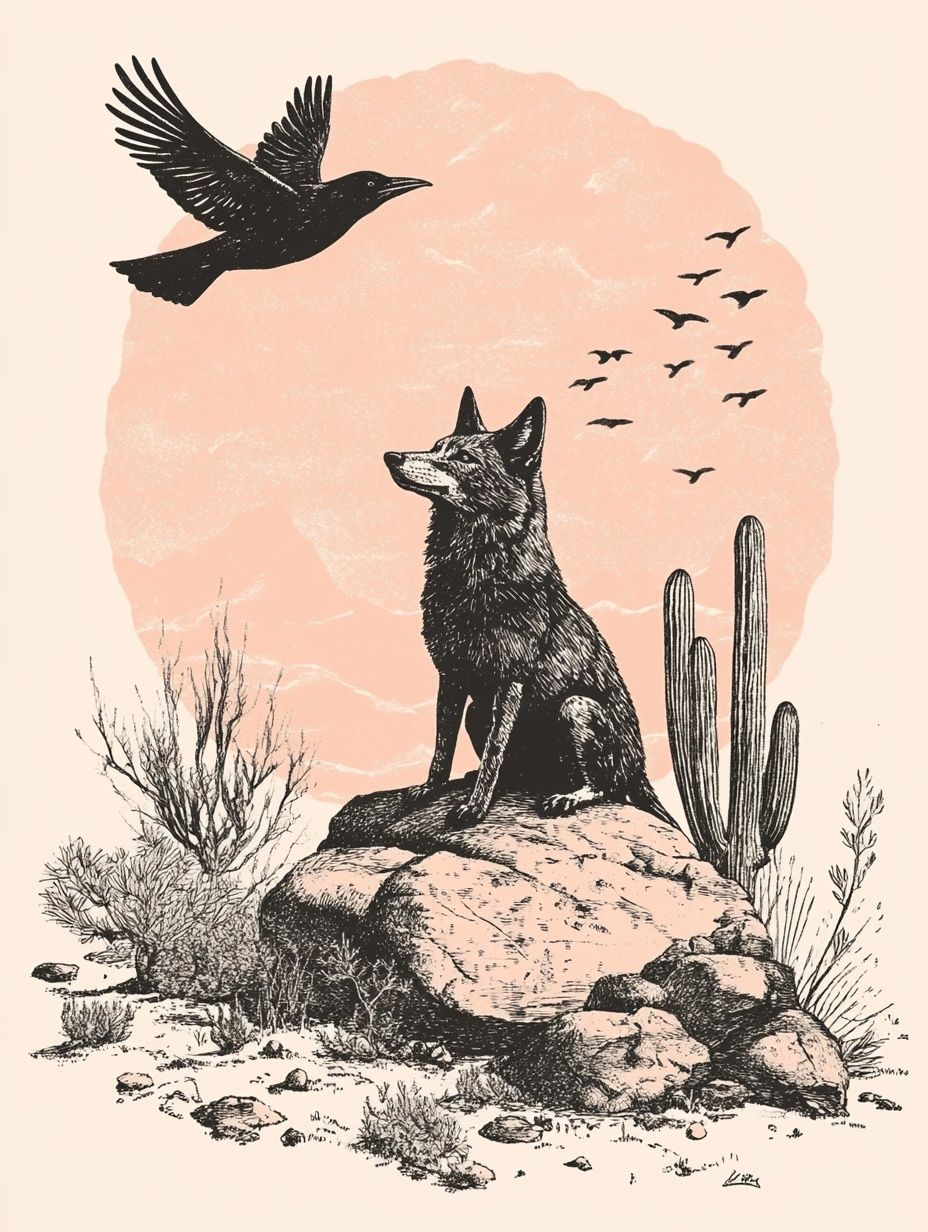
Apache trickster tales (Coyote and Raven)
Among the Western Apache and Tonto Apache peoples, oral stories of Coyote (Ma’ii) and Raven serve as both entertainment and moral instruction.
Coyote is a classic trickster figure - clever, reckless, sometimes foolish - who often causes trouble for himself and others. Raven can play a similar role or act as Coyote’s rival.
These stories aren’t considered “folktales” in a European sense but are part of a living oral tradition.
They explain natural phenomena, human behavior and the origin of cultural practices.
Versions vary between groups, but many are still told today in community settings and adapted in educational contexts.
Sacred desert plants & folk medicine in Arizona
Creosote Bush (Larrea tridentata)
Used by the Tohono O’odham, Pima and others, creosote is a desert staple in both medicine and cleansing practices. It’s used to treat colds, skin conditions and joint pain and is sometimes burned for spiritual purification - especially after death or illness. The plant’s strong smell, especially after rain, is often associated with protection and recovery.
Devil’s Claw (Proboscidea parviflora)
Devil’s Claw is known for its hooked seedpods and was commonly used in basketry and salves. Some stories say its unusual form marks the path of a trickster. While not central to ceremonial life, its design and durability gave it symbolic weight, and its seeds and roots were sometimes used in remedies.
Yucca (Yucca baccata and others)
Yucca played a practical and spiritual role for many tribes. The roots were used as soap in purification rites, particularly before ceremonies or after contact with the dead. The fibers were used for sandals, rope and ritual items. Among the Western Apache, yucca is sometimes associated with cleansing not just the body, but the space around it.
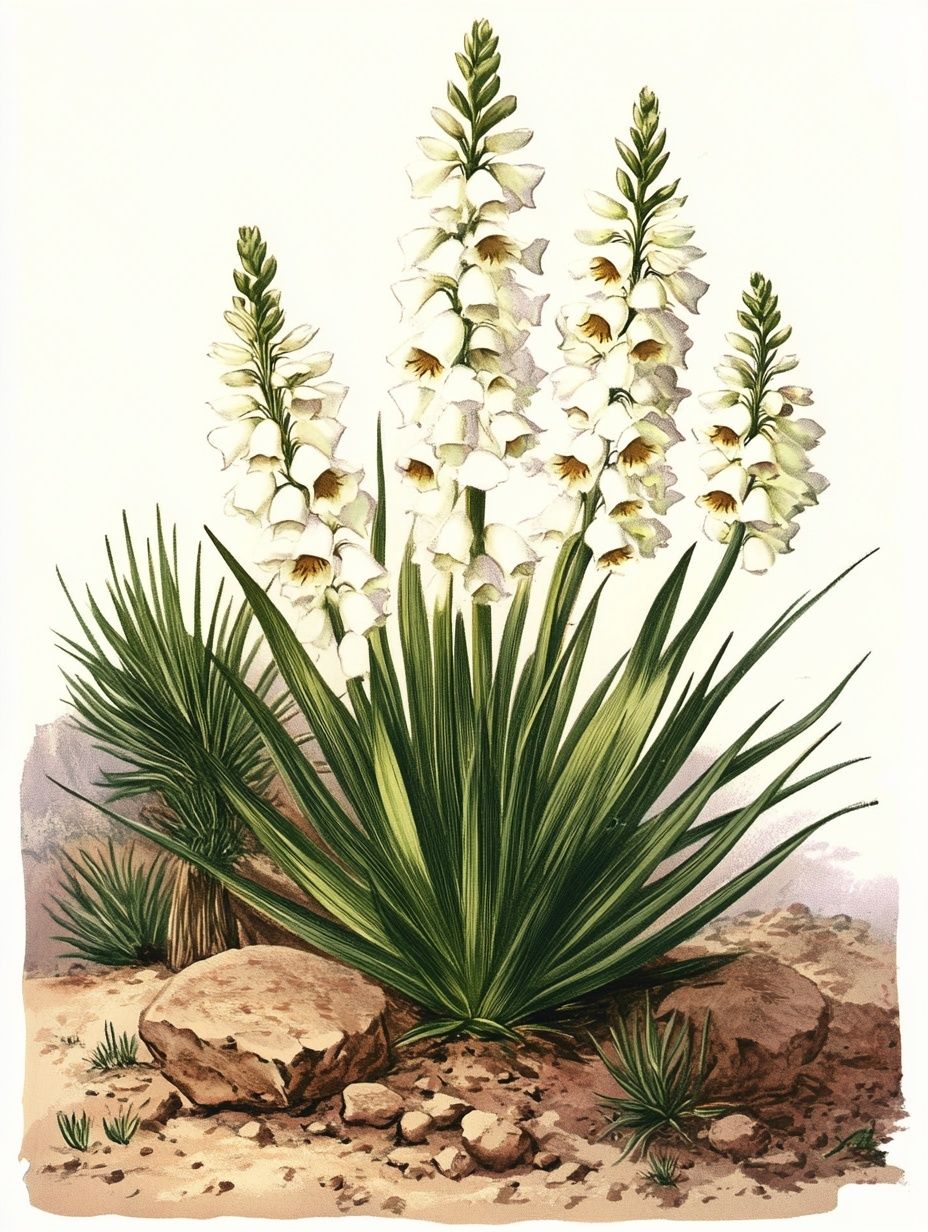
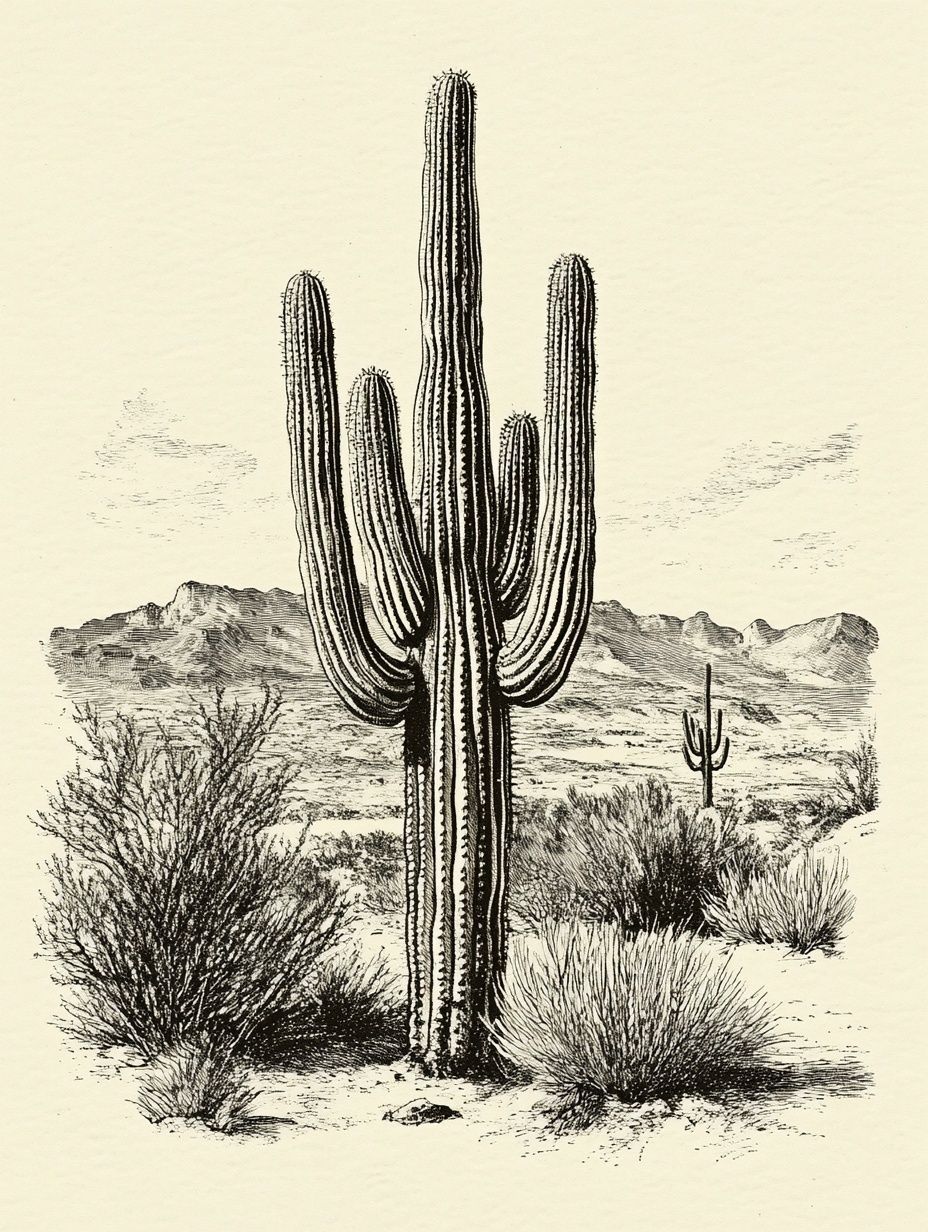
Mesquite (Prosopis spp.)
Mesquite trees were a major food source in the form of ground pods, but they also appear in seasonal and ancestral stories. Some tribes considered mesquite groves places of balance, where offerings might be left or stories told.
The tree’s role in providing shelter, food, tools and medicine made it a symbol of generosity and endurance.
Saguaro Cactus (Carnegiea gigantea)
Among the Tohono O’odham, the saguaro is part of a rain ceremony held during the cactus fruit harvest. The fruit is fermented into wine and consumed during a multi-day ritual that calls for summer rains.
Saguaros are also personified in some oral traditions - believed to be former people who now stand watch over the desert.
Arizona’s folklore certainly reflects a region where belief, survival and storytelling have always been intertwined. Its myths aren’t confined to the archives or cheesy Halloween tours but they live on in oral traditions, roadside markers, museum exhibits and the memories of people who still call these landscapes home.
And all these stories remind us that folklore is never just about the past. It’s a way of making sense of the present, one story at a time.
Article sources
- De la Garza, Phyllis. Ghosts of the Mogollon Rim. San Antonio: Western Lore Press, 1997.
- Weatherly, David. Monsters of the American Southwest. Greenville: Leprechaun Press, 2016.
- Underhill, Ruth. The Navajos. Norman: University of Oklahoma Press, 1956.
- Pynes, J. Cameron. Legends of Arizona. Phoenix: Golden West Publishers, 1986.
- Sherman, James E., and Barbara H. Sherman. Ghost Towns of Arizona. Norman: University of Oklahoma Press, 1969.
- Robinson, Will H. Yarns of the Southwest. Originally published 1921.
- Granger, Byrd Howell. Arizona’s Names: X Marks the Place. Tucson: Falconer Publishing, 1983.
- Cox, William T. Fearsome Creatures of the Lumberwoods: With a Few Desert and Mountain Beasts. Illustrated by Coert DuBois. Washington, D.C.: Press of Judd & Detweiler, Inc., 1910.
- Erdoes, Richard, and Alfonso Ortiz, eds. American Indian Myths and Legends. New York: Pantheon Books, 1984.
Shop this rare vintage ebook with folklore tales from Arizona
I spend a lot of time digging through old and out-of-print folklore texts and curate selected titles as digital editions.
I consulted this book in my research for this article and it features some fascinating tall tales and details of frontier life in the Southwest US, as told in the early 20th century - if you love learning about the past, you'll love this PDF ebook!
I've given it a new cover, tidied and compressed the original scans and repackaged it into a convenient digital download at a great price. Check it out here.
(Clicking the link will open the Mythfolks Etsy shop in a new tab.)
Explore more North American folklore


